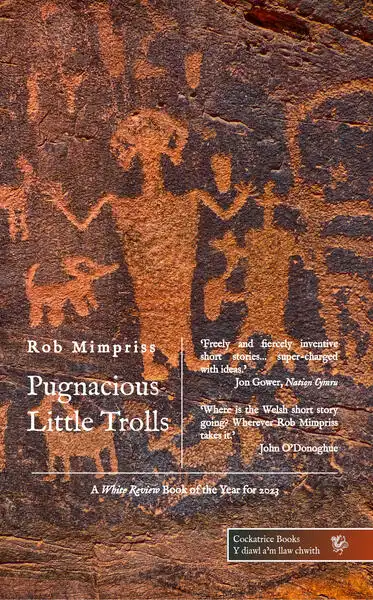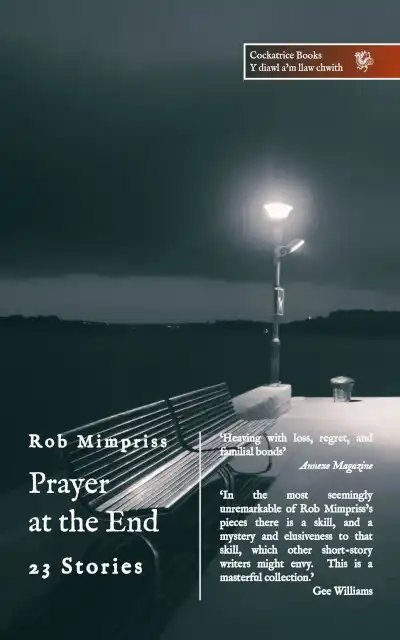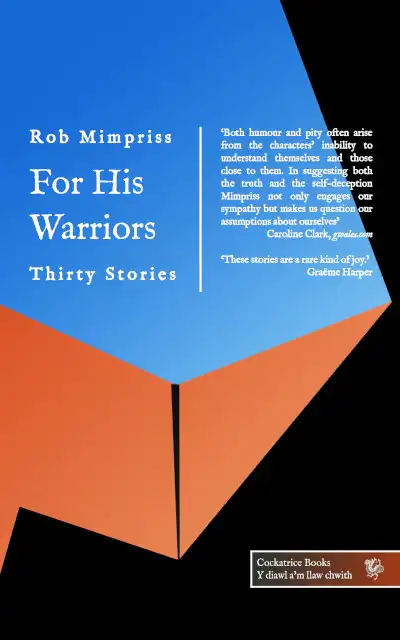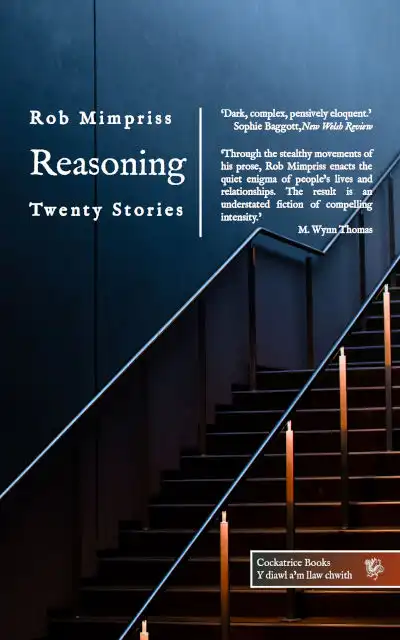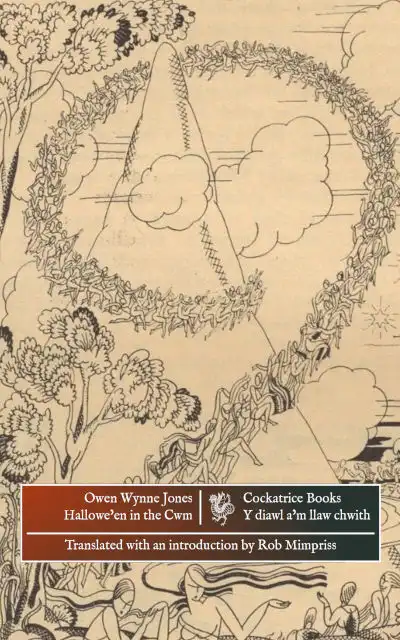The following essay appeared in New Writing: The International Journal for the Practice and Theory of Creative Writing 6:1 (2009), 57-66, DOI: 10.1080/14790720802582559. The version of record is to be found here.
I have been approached after class by a student, whom I shall call Luke. Luke is a second year undergraduate, a prose writer by choice producing work of quiet brilliance, whose comments during seminars are few but insightful. But Luke is frustrated by some aspects of the course, and this is not the first time that he has sought to discuss them with me. He is disappointed, first of all, that the official requirements of the course rob him of time he had hoped he would spend writing. He is concerned, second, that homework deadlines and portfolio word limits interfere with the slow, steady evolution that he believes a good piece of writing requires. Third, he is dissatisfied with the workshop method of teaching, though he seems to feel that this is due to shortcomings in the group of students I work with, and not with any weaknesses of my own. The result, however, is that he is investing some effort in preparing his responses to other students’ work, while receiving very little useful feedback in return.
I value Luke’s presence in my class, and I’m selfishly relieved that he is satisfied with the content of my teaching. In the years since I began as a teaceher I have developed methods like those recommended by Stephanie Vanderslice, being open with my students about my teaching methods and encouraging their awareness of pedagogic debates, using infrequent workshopping at first, but increasing it in line with their experience and self-confidence while using exercises to encourage experimentation and invention, and provoking friendly debates about form and technique which I try to keep running week after week, like television serials. But even so, I share Luke’s view that this group is hard to work with, and this impression is confirmed by colleagues teaching other courses. Some are very keen to learn, but not through practice or by making mistakes, and see the comparative lack of formal instruction on the course as a sign of neglect on my part. Others have identified one or two fellows in the class whose concerns and interests match their own, and they find the ideas and opinions of this small group more amenable than their peers’ or my own. When the opinions expressed by peers on their work differ markedly from mine, students feel that either I or their peers should be dispensed with, but I inspire the stronger resentment because I have more power. It is easier for these various factions to unite against me as a common enemy than to find any grounds for cooperation with each other, and the hostility of this large minority is making it hard for other students to hold meaningful discussion in class. The silences are getting longer, and the students who are prepared to break them are fewer, so that the education of all is suffering.
In response to this opposition I can discuss with my students the limits and nature of my authority. I can propose the democratic approach to teaching considered and rejected by Cantrell, in which students both write the syllabus and decide the final marks: and then point out my lack of authority to instigate such changes. I can point to Marsh’s still-relevant objections to current course outcomes and means of assessment; and I can ask my students to consider the part-time, casualised conditions which are reducing my effectiveness at work. But since I feel, as Rank suggests, that the author appoints himself before producing the work that justifies that authority, I am drawn to discuss authority with them more generally as a writer; to help them understand the nature of my authority and its limits, and recognise what Evans discusses: the authority that they bring to the task. The seminar which grows out of this desire repositions responsibility and apathy in larger and larger contexts until their moral nature becomes apparent, and this has enabled a number of classes to consider the investment they make in their own education, and that of others.
Nevertheless, it does so at a price, for some of the material explored in the seminar, like some of the material that follows in this essay, is upsetting: touching on the violent history of crime in America and the terrible history of conflict in Europe, it will take its toll on the emotional energy of students who attend to it. Students who feel unable to respond to such material may shelter from it in the deafness and apathy I am trying to challenge, and from this entrenchment they may confuse my authority, that asks them to understand Stanley Milgram’s disturbing discoveries, with the unbending demands of the experiment he designed. This material may also seem strange or troubling to the tutor, first for the alien methods of science, and second for the peculiar attitudes and methods of experimental psychology in the 1960s. There is also Milgram’s uncertain relationship with the modern liberal conscience that perhaps he helped form: inspired perhaps by his Jewish background, haunted by the idea that a Nazi death camp could be staffed by the people of 'any medium-sized American town,’ he nevertheless designed an experiment that would be unlikely, in an unmodified form, to meet the approval of an ethics committee today.
Nevertheless, Milgram’s experiment retains its social significance, since Thomas Blass, reviewing replications of his experiment between 1963 and 1985, found no significant change in their results over time. Burger (2009), carrying out a limited replication of Milgram’s experiment at Santa Clara University, reported findings similar to those when it was carried out 45 years ago. Moreover, Milgram’s work has helped form the conscience of writers and artists, and has left its traces on popular culture. Peter Gabriel refers to it in his album, So, as do Moore and Lloyd in their graphic novel, V for Vendetta. For an educationalist such as Priestley, Milgram’s experiment offers 'illustrative material’ for studies in personal growth and citizenship, and it will be familiar to some of my students from A-level psychology courses. For this particular group of students and writers, I hope that consideration of responsibility in the creative writing classroom will lead students to a deeper appreciation of the nature of the artistic calling, and that this will enrich the time we must spend together.
The seminar begins with a story.
It is set in New York in 1964. Kitty Genovese, a young woman returning home from her job in a bar, parks her car at two o’clock in the morning a hundred yards from the entrance to her apartment block. She is stabbed by a man with a knife and screams for help, and a neighbour puts up a window and calls out to the man to leave her alone. He does so, allowing her to crawl some distance away before attacking her again with the knife. He stabs her a third time in the lobby of the building. Forty people have heard her screams, and have done nothing to help her. It has taken her half an hour to die.
This story will receive mixed reactions from the class. The more mature of more motivated students, who understand what has happened to the group and want its atmosphere to change, will take my material to their hearts and become my co-workers. To others, it will not be clear whether I am introducing a writing exercise or a workshop, and those who have already rejected me as a teacher will feel that it is to these, and to insiders’ tips, that I should confine our discussions. And as the relevance of my material becomes clear, as I ask them to participate imaginatively in these events and consider how they themselves would behave, these students will shift their stance from maintaining that my material has no relevance to a creative writing classroom, to maintaining that it has no significance at all: it will appear that my material is challenging their consciences, and that they are rejecting it in turn.
Then why did the witnesses themselves do nothing, when what was required of them was so obvious, so easy and so safe? Was it (and they will accept this) a cultural quirk of America, where behaviour so often seems bizarre and extreme? Was it the effect of living in a city like New York, since the more often violence happens, and the more often it happens to strangers, the less we retain our power to be shocked? Is it to do with seeing violence on our screens, utterly realistic and yet utterly unreal, so that we no longer know how to respond to the reality?
To help them understand what happened I introduce the research of Latané and Darley (1970), whose account of the death of Kitty Genovese I have already been quoting. These psychologists established that New Yorkers were normally pleasant and helpful to strangers, that they would give directions, offer change and part with small sums of money. They would also tell strangers their names or accept small gifts of sweets, or if they refused would do so with courtesy. The strange passivity shown by Genovese’s witnesses arose in emergencies and in crowds. Bystanders are unprepared for emergencies, they must recognise that an emergency is taking place and must judge the correct course of action, and they must decide who is responsible for acting – not easy if others, perhaps more capable, are present.
Latané and Darley tested this hypothesis on undergraduates at Columbia University. Students were invited to interviews to express their views on the problems of urban living. Each one arrived singly, was directed to a waiting room, and was requested to fill in a questionnaire while he waited for the interview to take place. Once the subject was settled comfortably into his work the experimenters began pumping smoke into the room.
The time the subjects took to respond was measured from the moment they saw the smoke. The subject ‘would show a slight but noticeable startle reaction and then undergo a brief period of indecision, perhaps returning briefly to his questionnaire, before again staring at the smoke.’ He would investigate the vent, leave the room, and calmly report the matter to a member of staff. Three quarters of subjects acted within four minutes. The remaining quarter “stayed in the waiting room as it filled up with smoke, doggedly working on their questionnaires.’ They were summoned out of the room after a full six minutes, ‘partly out of compassion.’
This failure to respond was exacerbated when two other people were in the same room. These bystanders were working in collaboration with the experimenters, but looked and dressed like undergraduates, worked on questionnaires like the subjects themselves, and were instructed to look up as though noticing the smoke, shrug their shoulders, and return to their work, ‘waving away smoke to do so.’ With these confederates present, only one in ten subjects reported the smoke. The remainder stayed in their seats for the full six minutes allotted to them, passively enduring the discomfort it caused to their lungs and eyes.
The experiment suggested that while some people would always fail to respond to emergencies, this number would be higher if others were not responding. Bystanders are afraid of giving inappropriate help, or giving help that other people are already giving. These fears are exaggerated by the presence of others, as each person imputes all confidence and decisiveness to others and weakness and uncertainty only to himself. And a number of my students, the motivated but timid, will understand the relevance of this research to themselves: they doubt their status in the class, or the value of their contributions; they prefer to hear what others have to say first, and so in the end they say nothing. And many will feel that it is not their responsibility to comment on other students’ work when my contributions are to be relied on, and provide more trenchant and expert advice than they are capable of giving. Their quietness is justified because it does their fellow students no harm, and it does not prove that they are incapable of acting when necessary. So I tell them about another experiment.
Again it was conducted by Latané and Darley, on undergraduate psychology students. Upon arrival the subject was shown into a cubicle with a microphone and earphones, by means of which he was to contribute to a group discussion with either one, two or five other persons. These groups were to discuss the pressures of urban living, anonymously, to allow a greater degree of confession, and each participant would address the others in turn. It was emphasised that the experimenters would not listen to the discussion, but would gather their data afterwards, by questionnaire, and that the intercom would automatically allow each group member two minutes to speak in turn.
The first group member heard by the subject described his problems with his studies and with New York, and then mentioned shyly that he was liable to fits, especially when under pressure as a student. Other voices confessed to academic and personal problems, and the subject was also allowed his two minutes. When the first group member spoke again he began to ask for help, said he felt a seizure coming, and finally made choking noises and fell silent. This voice and all other voices heard by the subject were pre-recorded.
The time each subject took to leave his cubicle and raise the alarm was measured from the start of the fit. Subjects who believed that no-one else could hear the seizure all responded, most before the end of the fit. Subjects who believed that one other person could hear the seizure were more passive, and only 85 per cent responded, not all before the end of the fit. Subjects who believed that four other persons could hear it were less active still: 62 per cent responded in 166 seconds. Subjects who failed to respond to the emergency showed more distress than the ones who responded. When the experimenter came to their cubicles they asked ‘Is he all right?’ ‘Is he being looked after?’ and showed trembling and sweating hands. Many of the other subjects displayed signs of uncertainty and tension. Initial reactions included ‘My God, he’s having a fit!’ and ‘Oh God, what should I do?’
Latané and Darley's research provides situations my students can identify with, and relate to their own behaviour in seminars. They are young and inexperienced like the subjects were, afraid to take authority over their comrades or attract the attention of their leaders unnecessarily. They are starting to feel that in themselves also cowardice and conformity are stronger than altruism. A number of them are commenting that their behaviour in workshops has been less than helpful, and some no long feel able to assert that they would have acted to save Kitty Genovese.
In the case of these students, some of my learning objectives would be achieved if the seminar were now brought to an end. We could consider the effectiveness of the workshop, its ability to present social accountability as the accountability of writer to reader, its ability to hone skills in detached criticism which the solitary writer can later apply to his own work. In the light of this reminder, and of what we have learnt, students will understand the need to contribute to seminars, to pool their individual insights, and to see my expertise and experience as a resource that underlies their shared studies. If so, their new understanding will have a positive effect on our group.
But a number of students are still voicing disagreement. They maintain that Columbia University must attract a poor lot, that deaths like that of Kitty Genovese might be expected to happen in the USA but never in a civilised country like Britain, and that I might have used this seminar to better effect by telling them how to get higher marks or how to get their work published. They consider themselves to be capable students since they do everything I tell them, and are hampered only by a marking system that is biased against them, and a tutor who expects other students to teach them, since he knows less, it seems, about the business of writing than about obscure experiments of the 1960s and 1970s. They also feel that their allies are deserting them and going to my side, and desperation is causing them to abandon their guerrilla tactics. They will declare the course a failure, and lay the responsibility for this very firmly at my door: it is not themselves, but their leaders, who are to blame.
So I start telling them about Adolf Eichmann.
Eichmann is the figure underlying Stanley Milgram’s work, just as Kitty Genovese underlies that of Latané and Darley. For Milgram it is not enough to say that those who organised the Holocaust were exceptionally aggressive, callous or depraved, when they themselves attributed their actions to an unreasoning obedience.
The subjects and social context of Milgram’s experiment will be less familiar to my students than that of Latané and Darley, but even so, they will find it hard not to make an imaginative response to his experiments. He describes his subjects in great detail, introducing them personally and giving them names; he quotes their own reactions to what they have done, and constantly the ordinariness of his subjects is contrasted with the extraordinary behaviour his experiments provoke.
The experiments were performed at Yale University in the early 1960s. Subjects were recruited from the local community through advertisements in the local paper, and through a mail-shot to addresses in the telephone directory.
They were told that the experiment was meant to research the effect of physical punishment on learning. A fellow-subject would be strapped to a chair, and would be set to memorise certain pairs of words which he would then have to recite on cue. For every wrong answer he gave, the subject would administer an electric shock, starting with 15 volts and rising in 15 volt increments to 450 volts.
The appearance of the equipment and the behaviour of the confederate were designed to give the illusion of physical danger and intense pain. The subject’s fake control board comprised a row of thirty switches, each with a voltage clearly marked, and with labels describing the supposed distress to the victim. These comments were: Slight Shock, Moderate Shock, Strong Shock, Very Strong Shock, Intense Shock, Extreme Intensity Shock and Danger: Severe Shock. The last two switches, for voltages of 435 and 450, were marked XXX. When the subject pressed a switch it lit up, a buzzing was heard, blue light was seen, and the needle on the volt meter moved to the right. The subject was given a small shock himself, to enforce his belief in the efficacy of this equipment.
When the subject expressed reluctance to deliver a further shock, he was told four times to continue. If he expressed concern about the safety of the experiment, he was told that the shocks would cause no permanent tissue damage. If, after four consecutive instructions to continue, he refused, the experiment was aborted.
The performance of the confederate was scripted and precise. At 75 volts he grunted, and at 120 volts he shouted that the shocks were becoming painful. At 135 volts he groaned, and at 150 he shouted ‘Experimenter! Get me out of here! I won’t be in the experiment any more! I refuse to go on!’ At 180 volts he shouted ‘I can’t stand the pain!’ and at 270 volts ‘his response to the shock was definitely an agonised scream.’
From then on he refused to provide answers to the memory test. The subject was told to treat each silence as a wrong answer, and to punish it with the next voltage. If the subject co-operated with these instructions, the actor screamed with pain whenever a shock was administered. From 330 volts onward he was silent and unresponsive.
Forty subjects took part in the experiment. Eight dropped out between 135 and 180 volts. A further seven dropped out by the time the experiment reached 360 volts. Twenty-six subjects, more than 60 per cent, continued the experiment to the end, and willingly delivered the maximum shock three times before the experimenter halted the experiment.
The students who have accepted the relevance of Latané and Darley’s research will seek ways to apply this knowledge also. That earlier material has prepared their minds for uncomfortable truths, and they have developed a certain rueful respect for my roundabout teaching methods. The students who insist that they should not be expected to contribute in class, that I should deliver lectures on subjects chosen by them, are becoming few, and are starting to feel that they also have taken their stance too far. Worse still, my attitude to authority is confusing them, and they are being forced to waste energy thinking.
I begin now to cite individual subjects. For example there is Bruno Batta, a thirty-seven-year-old welder of Italian parentage. The experimenters note both his ‘limited intelligence’ and his ‘submissive... sweetness.’ However, he remains ‘impassive’ and ‘robotic’ in response to the actor’s distress, and ‘hardly takes cognizance of him as a human being.’ Later, He denies any responsibility for his rôle in the experiment, saying that he merely followed the instructions of the experimenter, and that the confederate brought his pain on himself. At the end, he says he was honoured to take part in the experiment, and is sorry only that he was unable to make the confederate perform the memory test. As Milgram comments on his behalf, ‘He has done his honest best.’
Another subject is Elinor Rosenblum, a housewife. She describes herself as socially accomplished and active in voluntary work with the Girl Scouts and with juvenile delinquents. Her behaviour to the confederate is ‘authoritative’ and ‘pretentiously correct,’ and this contrasts with the ‘weak, girlish comments’ she directs to the experimenter. She makes comments such as ‘Must we go on? Oh, I’m worried about him. Are we going all the way up there [pointing to the higher end of the board]? Can’t we stop? I’m shaking. I’m shaking. Do I have to go up there?’ Nevertheless she continues to the end of the experiment.
A third subject is Jan Rensaleer, an engineer born in Holland. He is ‘mild-mannered and intelligent,’ and a member of the Dutch Reformed Church. At 255 volts he refuses to continue with the experiment, saying he has ‘gone too far already.’ When asked who should take responsibility for delivering the shocks, he says he blames himself entirely. Asked about the likely outcome of the experiment, he comments on his own experience in Nazi-occupied Holland, and predicts a high rate of obedience. The experiment affects him so deeply that later he writes a letter to the staff, asking if he can join them in their work.
At this point we are drawing towards the end of the seminar, for I hope that Jan Rensaleer‘s request will be voiced by my students also. Since I am committed to collaborative learning, since we will be using seminars to comment on each other‘s work, I ask my students to commit themselves to collaborative learning also, to offer the group what is in their minds without being silenced by the quietness of others. But I also ask them, considering Milgram‘s experiment, to consider the nature of my authority as a writer and teacher, and theirs as writers and students.
Blass and Schmitt asked a panel of psychology students to consider that Milgram‘s subjects were obedient to the experimenters‘ reward authority and coercive authority, and among reluctant students my power to reward or discipline is an important consideration. They attend classes because I have told them that attendance is compulsory, and under my instructions they will make slight changes to the wording and presentation of their assignments, and expect higher marks in return for doing so. For such students, as Evans might point out, this lesson may also be felt as the exertion of my coercive authority, if they find it still less pleasant than the lessons they have resisted. And inasmuch as they attribute such authority to me, they will come to resent me unless they believe that I have legitimate authority also: that is, they believe they ought to obey their teacher, as Bruno Batta seems to believe he ought to obey the experimenter. Students who resent my power can be helped if they are assured of the limits of it, of their right to explain and defend their writing in commentary, and of the limited authority, held in trust for their better selves, that I attribute to myself. For the latter students I can hope that the workshops and discussions that will follow this seminar will help them value a different kind of learning.
Referrent authority is also explored by Blass and Schmitt, the authority of those whom others try to imitate. One wonders if Elinor Rosenblum is motivated by the referent authority of the experimenter, and I am concerned for students who become distracted by peers whose written and oral contributions to workshops are self-confident but glib. Referent authority gives power to the artistic coterie, and divides my classes and my colleagues into factions. Time will teach my students to choose their models carefully, but they also need to be reminded of the brief duration and limited authority of the workshop group, which cannot help their writing beyond a point which will soon be achieved.
I will ask students to discuss my informational authority and my expert authority. In the seminar I am describing, and in this essay, my informational authority is established by the reading list and the bibliography by which my sources can be checked. My reluctant students also accept my informational authority, since they want me to tell them how to do characterisation or how to make their writing original.
But if I am to be more reactive to my students‘ requests, if I am to give marks they will find uncomfortable, or make criticisms of their work that they will disagree with, if I am to ask them to read writers they dislike or use teaching methods they think valueless, then I must ask them to acknowledge my expert authority. I will support this with informational authority when I can, but for decisions which I lack the ability to explain, or which they lack the experience to understand, I must ask for their patience. I must also ask them to remove authority from the marking systems they resent, the publishers they wish to impress, and the genres and conventions which limit their writing, and give it to themselves.
How this might affect my students‘ experience of set texts and exercises, of the workshop, of assessment, is something we will still need to discuss. But my plea to my students to authorise themselves draws painfully from my own situation, for in terms of the empowerment explored by Evans I have more in common with them than with my colleagues: I do not have an office or computer or phone, I am not given the resources I need to research, and I am insecure in the very literal sense that my contract allows me to be replaced without cause. And I am concerned that a growing number of creative writing specialists, qualified to the same level as their critical colleagues, and with comparable records of publication, may be remaining on untenured contracts well into their careers, enduring economic uncertainty and poverty and subjected to the worst behaviour of which academics are capable.
For such people, as Evans comments, writing itself might address this power imbalance, for creative ability is not related to academic status. Beyond that, their alternatives are to remain in their posts for as long as they can, and hope that their employers will learn the lessons in humanity that Milgram’s paradigm offers to teach, or to quit, and take their abilities elsewhere. If they remain, I suppose at least they will be well placed to explore the relationships between teachers’, students’ and institutions’ authority. If they leave, their years of untenured service will have given them plenty to write about.




